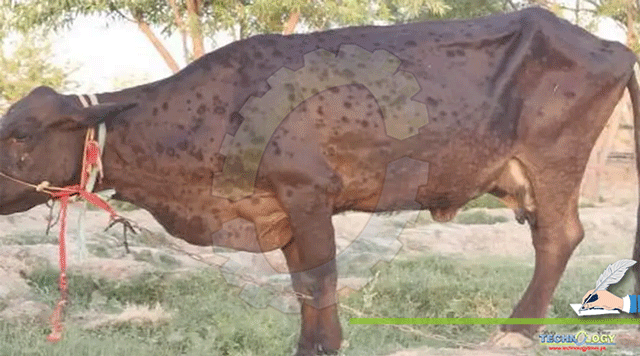The Khyber Pakhtunkhwa Livestock and Dairy Development Department has warned all districts of the potential for an outbreak of the Congo and Lumpy skin virus in cattle.

The Khyber Pakhtunkhwa Livestock and Dairy Development Department has warned all districts of the potential for an outbreak of the Congo and Lumpy skin virus in cattle.
To limit the spread of the viruses, the department has recommended that check points in tribal districts be provided with additional cattle sprays. This is to limit the potential spread of the viruses.
It emphasised that these illnesses not only endanger livestock but also the general public’s health.
The Director of the Livestock Department, Alam Zeb Khan, has reported that 83,000 doses of the Lumpy skin disease vaccine have already been purchased. In order to effectively combat the potential outbreak of the Congo and Lumpy skin virus in cattle, the department has asked the finance department for money to buy extra vaccines.
Khan added that approximately 180,000 cattle in Khyber Pakhtunkhwa contracted the Lumpy skin disease the previous year, resulting in the deaths of 7,000 cattle.
In order to reduce the risk of the Congo and Lumpy skin diseases spreading during the upcoming Eid-ul-Azha celebrations, livestock owners and people involved in the cattle trade are advised to remain vigilant and take the necessary precautions.
A mosquito or other parasite is the vector that spreads lumpy skin disease. Rarely, animals will infect one another, and occasionally, the disease will spread from contaminated surfaces to other animals of the same species. Animal nodes are affected by the virus, which can eventually cause large lesions to form on the body.
The illness is known to have a low morbidity rate but a significant negative impact on productivity. Since there is currently no known treatment, culling has been suggested as the only way to stop the disease’s spread. According to the European Food Safety Authority, vaccination of cattle is the most effective way to stop its spread.
According to the World Organisation for Animal Health, the affected areas can be removed before eating the meat of cattle with lumpy skin disease.